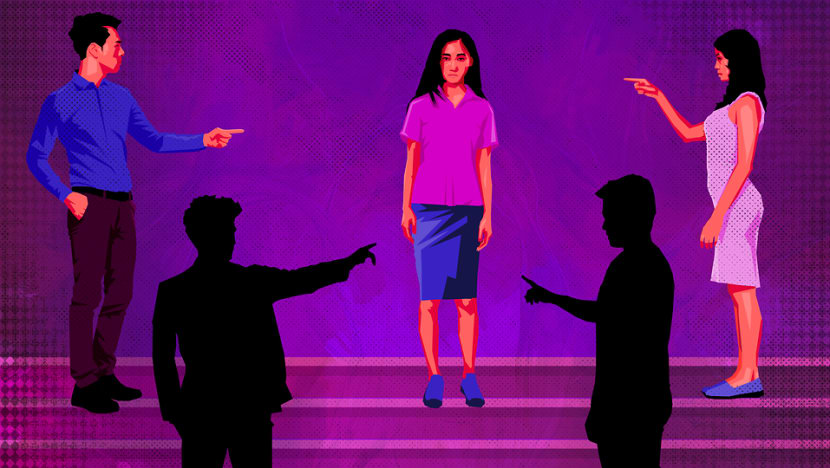1 in 7 in Southeast Asia live with a mental health condition, treatment gap in some countries is ‘huge’: WHO official
Mental health stigma is still widespread in Southeast Asia, said Dr Andrea Bruni, WHO's regional adviser for mental health in Southeast Asia.

About 260 million people in Southeast Asia – about one in seven – live with a mental health condition, and many of them are not receiving timely treatment, said a World Health Organization (WHO) official.
Mental health conditions are highly prevalent in the region, Dr Andrea Bruni, WHO's regional adviser for mental health in Southeast Asia, told CNA.
Meanwhile, the treatment gap is huge, he said in an interview on Tuesday (Oct 10), as the world marked Mental Health Day.
“In some countries, the treatment gap is as high as 90 per cent, meaning that up to 90 per cent of those that have needs in mental health are not receiving appropriate, timely treatment and care, or not receiving treatment and care at all.”
MENTAL HEALTH STIGMA STILL WIDESPREAD
Mental health stigma is also still widespread in Southeast Asia, noted Dr Bruni, who was speaking from New Delhi.
“Very often, stigma translates into discrimination of people suffering from these conditions. Stigma is particularly pronounced for people with severe mental health conditions.”
He added that a common myth which is widespread in the region is that individuals with such conditions need to receive treatment, care and support in mental health institutions, psychiatric hospitals, and asylums.
“The fact is different. The fact is that people with mental health conditions need to access services which are based in the community, which are more accessible and better respect the human rights of people,” he noted.
However, things are slowly changing, Dr Bruni said.
“Things are changing through the active engagement and empowerment of people with lived experience and caregivers, (which) should be an integral and fundamental actor in designing policies and services for mental health.”

UNIVERSAL RIGHT TO GOOD MENTAL HEALTH
On Mental Health Day this year, the WHO is focusing on the universal right to good mental health.
“Good mental health is vital to our overall health and wellbeing in general, and everyone has the right to enjoy the highest attainable standards of mental health,” said Dr Bruni, adding that his organisation is working to ensure mental wellness is promoted and protected.
“Yet all over the world and also in the Southeast Asia region, people with mental health conditions, unfortunately, continue to experience a wide range of human rights violations and many people are excluded from community and from society.
“Having a mental health condition should never be a reason to deprive a person from their human rights and to exclude them from participation in society.”
As of 2019, nearly a billion people, or about one in eight, around the world live with a mental health condition, according to the United Nations health agency.
Experts estimate that the figure is now much higher, amid recent global stressors such as the COVID-19 pandemic, the Russia-Ukraine conflict and the ongoing climate crisis.
“Despite multiple studies on high return on investment for mental health, there is still a mismatch in terms of investment in mental health services,” said Dr Bruni.
“It's important to invest more resources in mental health.”
COMMUNITY-BASED HEALTHCARE REDUCES STIGMA
There are still many gaps to be filled, said observers. These include insufficient research, inadequate policies, scant spending and poor treatment coverage.
Dr Bruni suggested promoting more community-based healthcare networks.
“Traditionally, most of the investment of human and financial resources in mental health has been directed towards tertiary facilities, psychiatric hospitals and asylums,” said Dr Bruni.
“We know that these facilities not only do not have the capacity to bridge the treatment gap in mental health, but very often unfortunately, are associated with violations, including severe violations of human rights.
“It's important to invert this trend and invest in strengthening and expanding mental health networks in the communities.”
MENTAL DISORDERS OBSERVED AMONG YOUTHS
Mental disorders have remained among the top 10 leading causes of disease burden worldwide in more than a decade, according to WHO. The two most common conditions are depression and anxiety disorders.
Observers have stressed that such disorders are becoming significant among young people.
Studies in the United States, for instance, have linked social media, in particular, to anxiety and depression among young people.
“There's definitely an increase, including after COVID-19, in terms of anxiety and depression among youth and adolescents,” said Dr Bruni, adding that social media has been a double-edged sword.
“Social media, and media in general, can play a very positive role, but also a negative one. So this is true for many areas in mental health, depression, anxiety, and also a related topic, which is suicide prevention.”

SUICIDE IS A SERIOUS PUBLIC HEALTH CHALLENGE
Suicide is also a pressing concern that healthcare experts are looking to address.
According to the WHO, an estimated 200,000 people in the region lose their life to suicide every year.
“We know that suicide is the leading cause of premature mortality among young people in many countries,” said Dr Bruni.
He noted that there are some concrete interventions that countries can take, such as managing those who with suicidal thoughts, promoting responsible reporting of suicide in the media, and building up the social and emotional life skills of youths.
There is also a need to address the means of suicide, he added.
“And in this region, we know that the most (common) means is pesticides. So we need to regulate, limit, and ban access to pesticides.”
This is a serious public health challenge, Dr Bruni cautioned. “We need to work on it because we know that suicides are preventable, but preventing them is no easy task.”


















